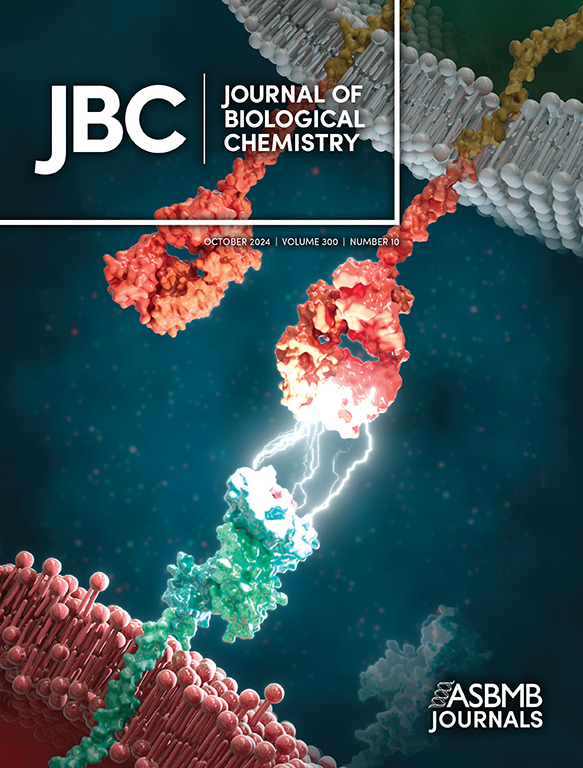Unifying Perspectives on the Activity and Genotypic Targeting of Pharmacological Chaperones
IF 4
2区 生物学
Q2 BIOCHEMISTRY & MOLECULAR BIOLOGY
引用次数: 0
Abstract
Several diseases of protein misfolding can now be treated with an emerging class of therapeutics known as pharmacological chaperones, pharmacochaperones, or correctors. These small molecules exploit the universal thermodynamic coupling between ligand binding and protein folding to suppress conformational defects that disrupt protein homeostasis. While the mechanistic basis of their activity is quite simple in theory, their nuanced proteostatic effects can vary depending on the intrinsic properties of their target proteins and the cellular context. Deviations in activity are especially pronounced across panels of pathogenic variants of the target protein. In this perspective, we explore the factors that shape the potency of pharmacochaperones and the intrinsic sensitivity of different target proteins in relation to various theoretical considerations and experimental observations. We discuss how emerging technologies have provided general insights into the molecular basis of the variant-specific effects of certain pharmacochaperones. We also highlight ongoing efforts to identify existing drugs that stabilize misfolded variants and to repurpose them as pharmacochaperones. Finally, we discuss how the chaperone activity of current drugs could potentially contribute to complex pharmacology and deviations in therapeutic efficacy across patient cohorts. Together, these principles provide a coherent framework that may help guide the discovery and precision targeting of next generation pharmacochaperones for both current and new targets involved in proteostasis diseases.药理伴侣蛋白活性和基因型靶向的统一观点
一些蛋白质错误折叠的疾病现在可以用一种新兴的治疗方法来治疗,这些治疗方法被称为药物伴侣、药物伴侣或纠正剂。这些小分子利用配体结合和蛋白质折叠之间的普遍热力学耦合来抑制破坏蛋白质稳态的构象缺陷。虽然它们活性的机制基础在理论上非常简单,但它们细微的蛋白质抑制作用可能因其靶蛋白的内在特性和细胞环境而异。在靶蛋白的致病性变异组中,活性偏差尤其明显。从这个角度来看,我们将根据各种理论考虑和实验观察,探讨影响药物伴侣的效力和不同靶蛋白的内在敏感性的因素。我们讨论了新兴技术如何为某些药物伴侣变异特异性作用的分子基础提供了一般见解。我们还强调正在进行的努力,以确定现有的药物,稳定错误折叠的变异,并重新利用它们作为药物伴侣。最后,我们讨论了当前药物的伴侣活性如何可能导致复杂的药理学和患者群体治疗效果的偏差。总之,这些原则提供了一个连贯的框架,可能有助于指导下一代药物伴侣的发现和精确靶向与蛋白质停滞疾病有关的当前和新的靶点。
本文章由计算机程序翻译,如有差异,请以英文原文为准。
求助全文
约1分钟内获得全文
求助全文
来源期刊

Journal of Biological Chemistry
Biochemistry, Genetics and Molecular Biology-Biochemistry
自引率
4.20%
发文量
1233
期刊介绍:
The Journal of Biological Chemistry welcomes high-quality science that seeks to elucidate the molecular and cellular basis of biological processes. Papers published in JBC can therefore fall under the umbrellas of not only biological chemistry, chemical biology, or biochemistry, but also allied disciplines such as biophysics, systems biology, RNA biology, immunology, microbiology, neurobiology, epigenetics, computational biology, ’omics, and many more. The outcome of our focus on papers that contribute novel and important mechanistic insights, rather than on a particular topic area, is that JBC is truly a melting pot for scientists across disciplines. In addition, JBC welcomes papers that describe methods that will help scientists push their biochemical inquiries forward and resources that will be of use to the research community.
 求助内容:
求助内容: 应助结果提醒方式:
应助结果提醒方式:


